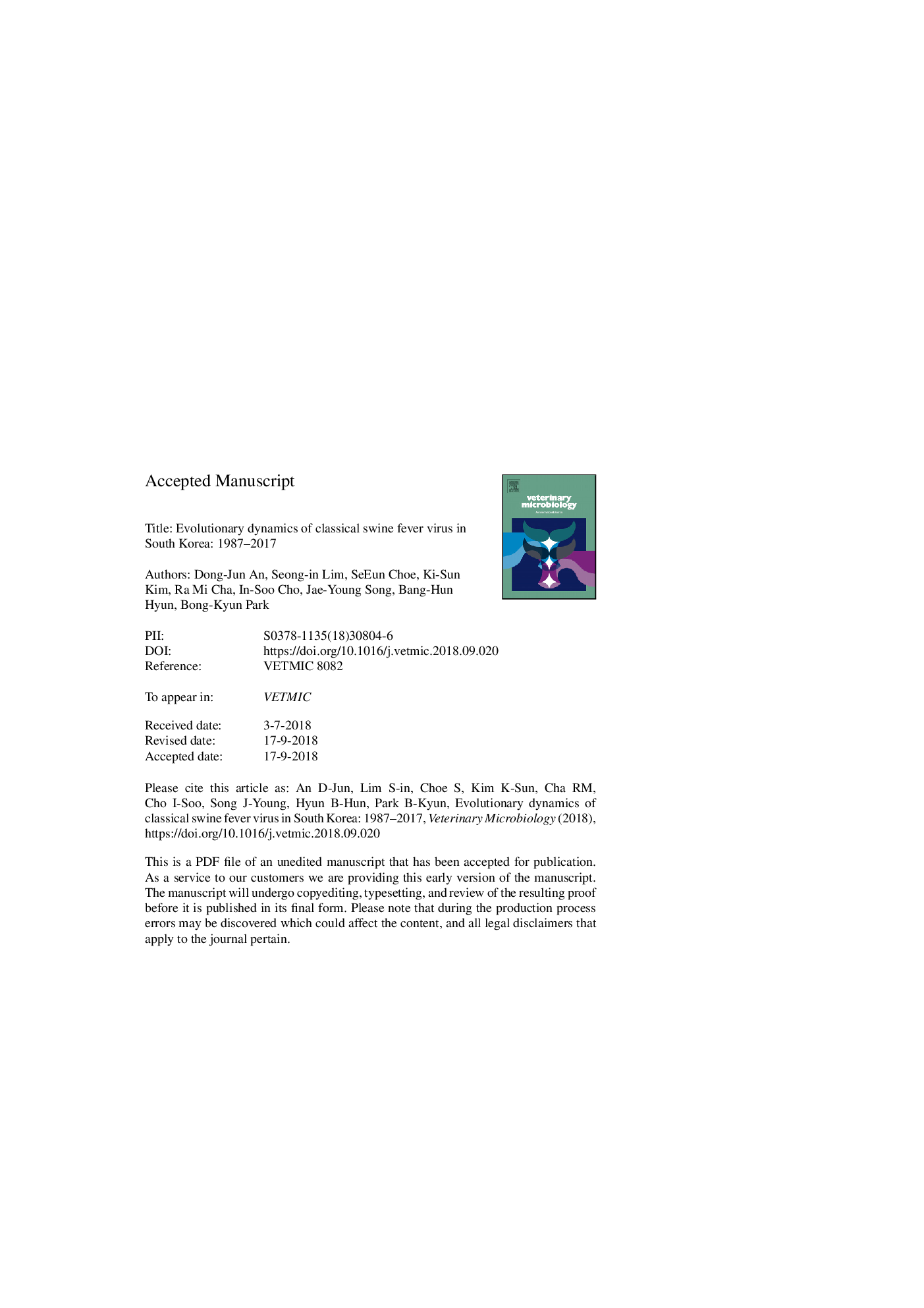| Article ID | Journal | Published Year | Pages | File Type |
|---|---|---|---|---|
| 11025827 | Veterinary Microbiology | 2018 | 31 Pages |
Abstract
The 5â² UTR (n=102) and full-length E2 (n=37) genes of classical swine fever viruses (CSFVs) circulating in South Korea over the past 30 years (1987-2017) were examined to determine the evolutionary rate and estimated time of the most recent common ancestor (tMRCA). From 2000, the Korean classical swine fever (CSF) antigen changed from genotype 3 to 2, which comprises subgenotypes 2.1b (2002-2013) and 2.1d (2011-2017). There are genotypic variations in the full-length E2 gene of Korean CSFV genotypes 2.1b and 2.1d (seven separate amino acid substitutions); these are useful distinguishing markers. The mean substitution rate (Ã103 substitutions/site/year) for Korean CSFV was estimated to be 2.2088 (95% highest posterior density (HPD): lower, 1.7045; upper, 2.7574) and the mean tMRCA was estimated to be 1901 (95% HPD: lower, 1865; upper, 1933). The effective population size of Korean CSFV genotype 2 increased rapidly from 2002 to 2003, after which it remained constant. The occurrence of CSF in Korea is expected to decline in the future; however, it will likely be more prevalent in wild boar than in domestic pigs. Thus, there is a risk of transmission from wild boar to breeding pigs.
Keywords
Related Topics
Life Sciences
Agricultural and Biological Sciences
Animal Science and Zoology
Authors
Dong-Jun An, Seong-in Lim, SeEun Choe, Ki-Sun Kim, Ra Mi Cha, In-Soo Cho, Jae-Young Song, Bang-Hun Hyun, Bong-Kyun Park,
